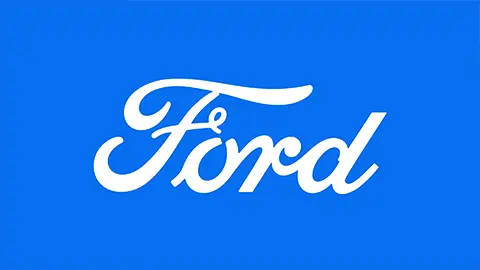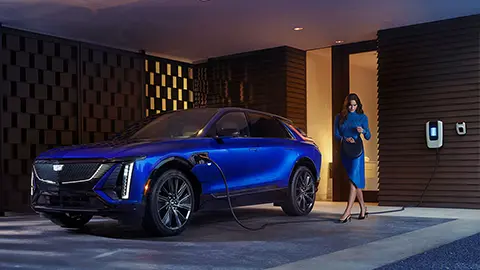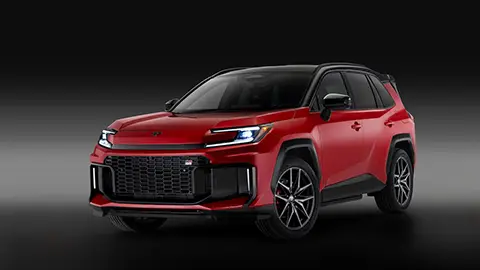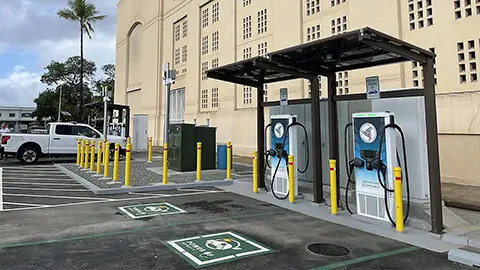A Look at the Future of Tesla
Tesla just announced (and promised) a lot, at their recent “We, Robot” event. Depending on the media outlet, it’s been called everything from make-believe to a future that’s only months away. The truth, as always, is somewhere in between: let’s explore what happened, what was announced and what we think is likely to happen next.
For this article, I decided to focus first on products that were announced at the event; then, we take a a more in-depth look at historical context and what this event means for Tesla and where they’re going as a company.

Tesla Cybercab, AKA Robotaxi
The product that probably had the most hype, and people guessing what would be revealed leading up to the event, was the CyberCab. This is Tesla's fully autonomous, driverless two-seat taxi, something Elon Musk said we should expect to be in production before 2027 and cost less than $30,000.
The Cybercab represents Tesla’s vision for the future of ride-sharing – eliminating the need for human drivers. The Cybercab is designed as a rather sleek, two-seater vehicle with no steering wheel, and it is dependent on Tesla's Full Self-Driving (FSD) technology.

The styling surprised a lot of people, and I must admit I think it’s a good balance of futuristic while also being clearly a car that happens to drive itself. At the event, Tesla engineers had shared that the reason for making it a two-seater was because over 70 percent of current taxi rides are for two people or less. I haven’t been able to confirm this, but it anecdotally seems likely.
People at the event also shared that if you need more than two seats, Tesla Model Ys and some of Tesla’s other vehicles would be available to give you a lift – but what if you and 19 of your closest friends need a lift somewhere?

Tesla Robovan
There were rumors Tesla would announce a van, but I don’t think anyone expected a futuristic, art-deco inspired, fully-autonomous vehicle to roll up. Designed for transporting both passengers and goods, the Robovan was positioned during the presentation as a game-changer for the logistics industry, enabling automated delivery services, reducing the need for human drivers, and potentially lowering operational costs.
While other companies have announced similar small autonomous vans and buses before, most of them have appeared much more still in the development phase, or come across as science projects – most have been shelved indefinitely.

The Robovan did seem more polished than similar concepts that have come before, Musk and Elon even mentioned that the commercial version would look exactly as the one at the event. It’s normal for wild concept vehicles to vastly change after their reveals – but with Tesla bringing the Cybertruck to market as it did, it seems more likely that Tesla could actually produce such a wild design when – or if – it is released.
Optimus Humanoid Robot
Tesla also showcased advancements in their Optimus humanoid robot. Its inclusion at the event signaled Tesla's intention to integrate robotics more deeply into daily life, especially in sectors like manufacturing and service industries.
There has been a bit of controversy as to whether the Optimus robots were acting autonomously or being tele-operated by humans (it seems the latter). Having said that, it is impressive how Optimus has come since being first publicly displayed in 2022.
The timeline for widespread use, let alone production has also been fairly vague. Musk has said “within the next few years” about Optimus before – but given Tesla’s delivery history, it seems likely closer to 2030 or beyond than imminent. We are more likely to see Cybercabs on the street than Optimus bots walking around.
Wireless EV Charging
As part of the Cybercab announcement, wireless charging was mentioned as the only option currently planned for charging the Cybercab. Tesla has previously hinted at incorporating wireless charging capabilities for its vehicles at an investor event – and it’s no secret that the company has acquired the technology.
With all of the recent EV announcements about Tesla’s other charging standard going more mainstream (NACS), it’ll be interesting to see how wireless charging is incorporated.
Tesla’s Master Plans
So what did the “We, Robot” event accomplish for Tesla? First, even though many still think of Tesla as a startup, Tesla has been around for two decades now, and is the world’s largest manufacturer of fully electric vehicles, along with being the most valuable automaker in the world.
Some argue this valuation is due to Tesla always hyping the next great thing and selling to Wall Street. While it’s true that Tesla has tried to position themselves as more of a tech company than an automaker, they have a successful track record of diversifying their offerings beyond just electric cars.
While the timelines have generally taken longer than promised – Cybertruck being one example, originally slated to go into production in 2019, or the second-generation Roadster – Tesla has expanded into the energy and the very profitable global energy storage market. They also sell software services on top of their hardware offerings.
Tesla has a history of releasing company visions that it refers to as “Master Plans.” Originally released as blog posts, they’ve lately evolved into different formats – from a white paper last year to this year’s “We, Robot” event.
Tesla’s first Master Plan, released in 2006, revealed not just their plan for eventually building electric vehicles after the niche first-generation roadster, but also how electric vehicles were an important sustainable standpoint and how they would eventually build EVs at scale.
The second Master Plan, in 2016, shared how Tesla was going to evolve beyond just the Model S and would build more cost-effective EVs at scale, such as the Model 3. Additionally, Tesla shared how they were going to move beyond just being an automaker. This was really also the company’s first announcement about its autonomy plans, and at the same time, the Master Plan signaled Tesla’s expansion into a full electrical ecosystem. You could purchase an EV, and solar panels for your house, to power it all from the same company.
The third Master Plan, from 2023, was more of a white paper. It focused on how electrification would be the answer to not just light-duty vehicles or home energy needs, but also to global and heavy-duty needs. From utility-grade batteries, to Megapack, to Semis, Tesla was expanding from not just being a consumer-facing company, but a global commercial ecosystem as well.
Tesla’s Vision for the Future
Now enter the “We, Robot” event, which served many purposes, one of which was a way for Tesla to show what their current vision of the future is, and where they plan to go as a company.
While Tesla plans to continue to expand their current automotive and energy offerings both to consumers and the commercial market, they also plan to expand again into the world of AI and robotics – sectors that Wall Street loves.
Tesla has been selling the vision of their Full Self-Driving (FSD) autonomy/advanced driver assistance system (ADAS) since about 2016. In that time, it has evolved and some vehicles have unfortunately run into compatibility issues.
(I coincidentally have Tesla’s FSD on one of my vehicles, and find it to be generally pretty impressive, but it’s also something that requires vigilance. However, the rate at which it has improved over the past year is extremely impressive. So much so that it is hard to imagine not having it in any daily vehicles I own moving forward).
Other automakers offer competitive driver assists – like Ford’s BlueCruise and Chevy’s SuperCruise – but they have not been rolled out to the scale or with the same compatibility Tesla has delivered with its vehicle fleet.
Conclusion: Maintaining Momentum
Overall, “We, Robot” appeared to be a buzz-worthy event with an optimistic view of autonomy and AI as part of Tesla’s future – but was light on specifics. That said, Tesla’s track record and current position in the market means it might have been all the company needs to keep its momentum going.















